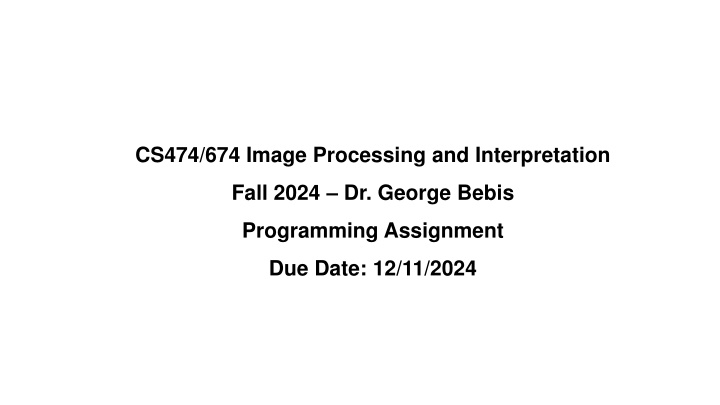
Advanced Image Processing Experiments: Enhancing Image Quality
Explore advanced image processing experiments including noise removal, convolution in the frequency domain, homomorphic filtering, and image restoration techniques. Understand the consequences of failing to reduce noise in face recognition systems. Dive into innovative methods for improving image quality and extracting noise patterns for enhanced visual data analysis.
Download Presentation

Please find below an Image/Link to download the presentation.
The content on the website is provided AS IS for your information and personal use only. It may not be sold, licensed, or shared on other websites without obtaining consent from the author. If you encounter any issues during the download, it is possible that the publisher has removed the file from their server.
You are allowed to download the files provided on this website for personal or commercial use, subject to the condition that they are used lawfully. All files are the property of their respective owners.
The content on the website is provided AS IS for your information and personal use only. It may not be sold, licensed, or shared on other websites without obtaining consent from the author.
E N D
Presentation Transcript
CS474/674 Image Processing and Interpretation Fall 2024 Dr. George Bebis Programming Assignment Due Date: 12/11/2024
Experiment 1: Noise Removal The noisy boy image shown below has been generated by adding cosine (i.e., periodic) noise to the original boy image. Using frequency domain filtering, use (i) a band-reject filter and (ii) a notch filter to remove the noise and show your results in each case. For comparison purposes, attempt to remove the noise in the spatial domain using Gaussian filtering (e.g., 7 x 7 or 15 x 15 filters). Instead of removing the noise, devise a procedure to extract the noise pattern.
Experiment 1: Noise Removal (contd) Accurate and reliable face verification and recognition relies heavily on high-quality face images. What are some potential consequences of failing to reduce noise or introducing artifacts due to algorithmic errors? This is a free response question; you can discuss both safety and economic implications. Provide proper citation for any information you obtain from other sources.
Experiment 2: Convolution in the frequency domain Repeat the experiment described in Example 4.15 (page 317), using the lenna image (i.e., Sobel filtering). For convolution both in the spatial and frequency domains (i.e., see Figure 4.38, page 319) and compare your results. comparison purposes, perform the
Experiment 3: Homomorphic Filtering Implement the homomorphic filtering method and apply it on the girl image shown to improve its quality. For high-pass filtering, use a high-emphasis filter: c u 2 2 2 0 + ( )/ v D = + ( , ) H u v ( ) 1 e H L L
30% Extra Credit: Image Restoration Assuming Motion Blur Apply the motion blur function H(u,v) on the lenna image using a=b=0.1 and T=1 T H u v u + ua vb + = ua vb e + ( ) j ( , ) sin( ( )) ( ) vb Add Gaussian noise (see notes) Restore image quality using (1) Inverse Filtering and (2) Wiener Filtering 2 ( , ) H u v ( , ) ( , ) H u v G u v ( , ) F u v ( , ) F u v = = (1/ ( , )) H u v G u v N u v F u v + ( , ) ( , ) ( , ) H u v 2 + ( , ) H u v K = ( , )
